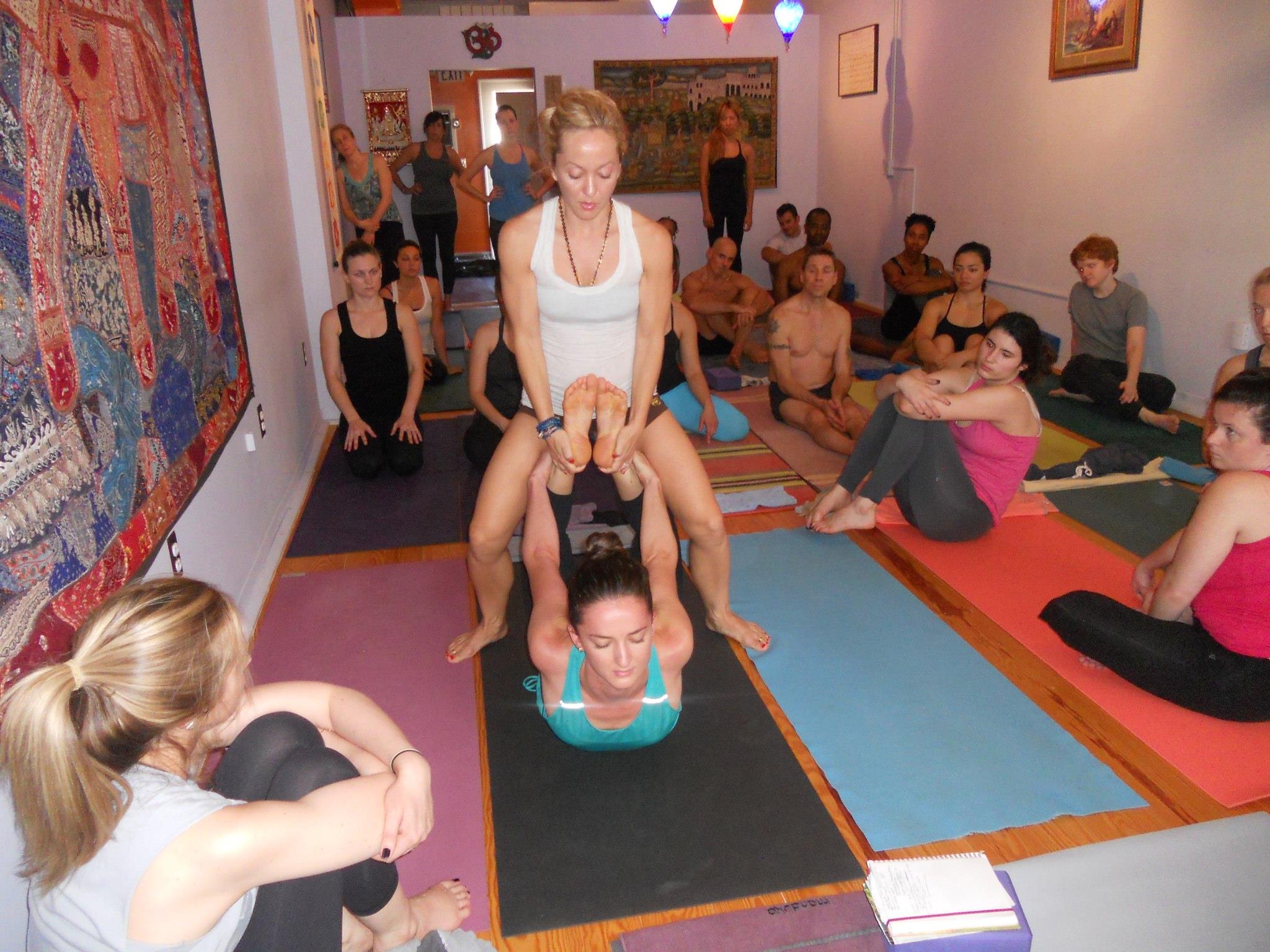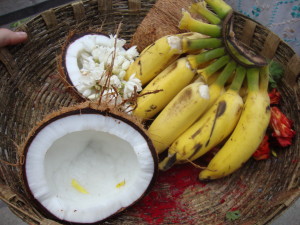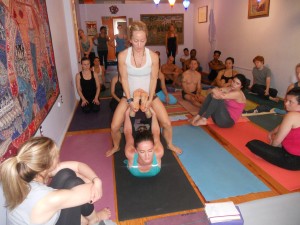Chai Talks Lecture Notes
Thanks again to all the students who joined Lara, Michael and I for our first series of “Chai Talks” at Land Yoga!

Parampara, Lineage and Non-Attachment in Practice
Presented July 9, 2016
“First I want to give an overview of the lineage this yoga practice comes from, what that means and who our teachers are. And then I want to touch on the concept of non-attachment in practice and how that can be of practical and beneficial use for the long-term yoga practitioner.
I think the most interesting way to link these two is through the opening and closing chants.
The opening chant is actually a combination of parts of two different mantras, combined together and used to give thanks to all the gurus that have come before us and taught this practice, our guide to the removal of ignorance and the path towards happiness, peace and control of the mind.
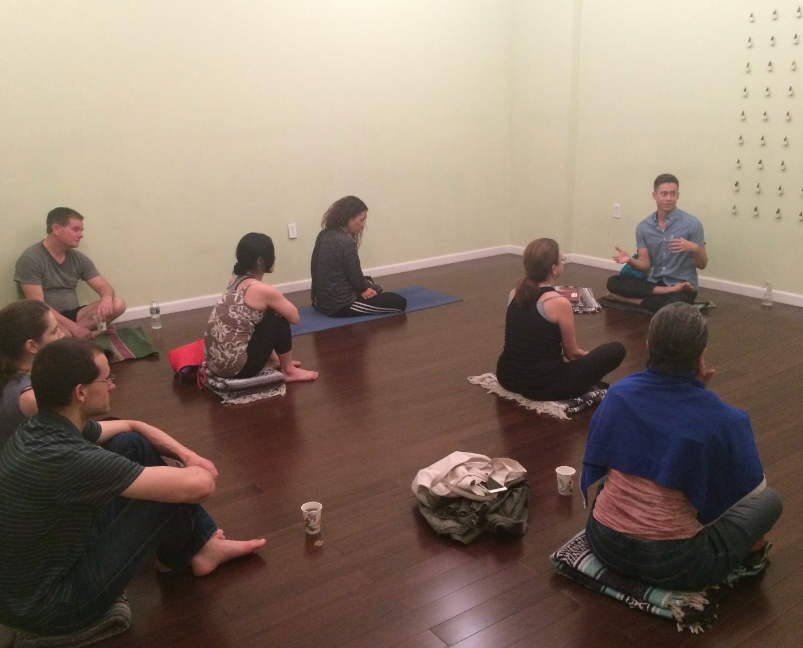
The opening chant first bows to all gurus and then specifically hails Patanjali, the ancient sage who codified the Ashtanga yoga method.
Click here to read and listen to the opening chant.
As we “bow to the lotus feet of the gurus,” in the opening mantra we acknowledge that Ashtanga Yoga is taught in a paramapara lineage system. This term is an Indian concept that comes from the idea of a guru-shishya relationship which is very common in Vedic, Hindu or Buddhist studies.
Paramapara is a Sanskrit word that means a direct succession of knowledge passed from teacher to student. Literally an uninterrupted row or series, order, succession, continuation, mediation, tradition.
It’s as undiluted as possible, it’s in a pure form and therefore is most valuable because it’s based on direct and practical experience and knowledge.
Teachers of this lineage:
-
Krishnamacharya
Click here for the book I use to learn more about this teacher.
- born in India in 1888
- “Father of Modern Yoga”
- learned yoga first from his father and went on to study in Varanasi and earn many advanced degrees in yoga and vedanta
- found his teacher in the Himalyas of Tibet: Ramamohan Bramacharya and studied with him for 7.5 years
- King of Mysore, Wodeyer 4th was patron, he traveled giving lectures and demos
- Opened the yogashala at the Mysore Palace 1926
2. Sri K Pattabhi Jois
- born in India 1915
- studied with Krishnamacharya from 1927-1953
- established another yoga shala at the palace in Mysore
- 1948 established Ashtanga Yoga Research Institute at his home in Lakshmipurim
- began teaching western students in 1960’s. Moved the shala to its current home in Gokulam, Mysore in 2001.
- came to USA in 1975, Encinitis CA
- Book Yoga Mala 1962, published in English 1999
3. His children, Saraswati and Manju
- Saraswati and Manju both still teach today, Manju in the US and Saraswati in India.
- Saraswati was one of the first women to teach yoga in Mysore. She taught in a local temple and the opened a shala in her home.
4. His grandson, R. Sharath Jois
- born in 1971
- assisted Guruji from around age 18 until his death in 2009
- current director of KPJAYI in Mysore India
- Guruji’s most advanced student
- First edition of book Ashtanga Yoga Anusthana released in 2013
Non-attachement
What does Patanjali say? –Yoga Sutras 1.15
Patanjali says that there are two core principles upon which all of yoga is built – we know one – practice! The other non-negotible is vairagya – non-attachment.
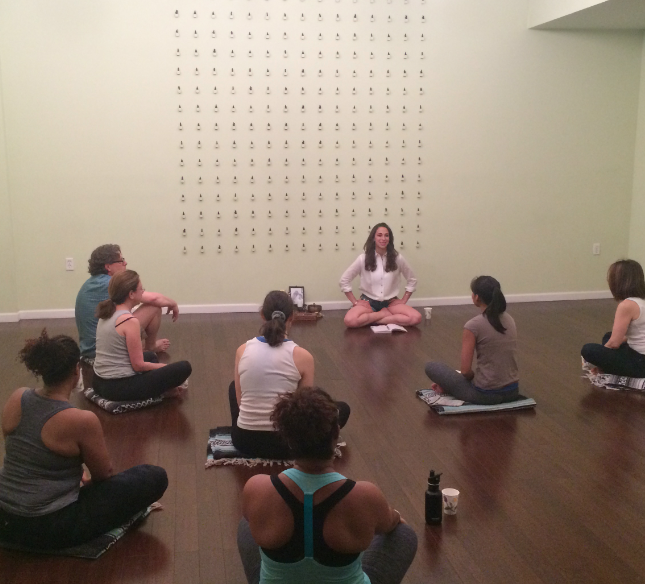
Vairagya literally means – “not getting stirred up” and is the willingness to let something arise without reacting to it.
“Practice leads you in the right direction, while non-attachment allows you to continue the inner journey without getting sidetracked into the pains and pleasures along the way.”
When we talk about dis-attaching in a yogic sense, we are really letting go of reactions towards pleasure or away from pain. So positive or negative – reacting connects us to the “me-ness” that separates us away from the universal.
“Every time we soften to an experience that would otherwise cause us to react we break or habit of setting our personal consciousness apart from nature.”
This does not mean we “don’t care” about yoga or practice or the physical poses. Instead we care deeply and practice with devotion and connection but are learning to not be devastated or too excited about any of the outcomes.
The closing mantra which is a shanti mantra – a peace chant – that literally asks us to give up the fruits of our efforts and send peace to all beings.
By making this not about “me” or the “success” or “failures” physically or mentally at the end of my practice, we’re more able to connect with the true transformation yoga offers.
In order to get it we have to let it go. By dedicating to the good of all – we’re practicing non-attachment.”
Click here to read and listen to the Closing Mantra from the Rg Veda.

